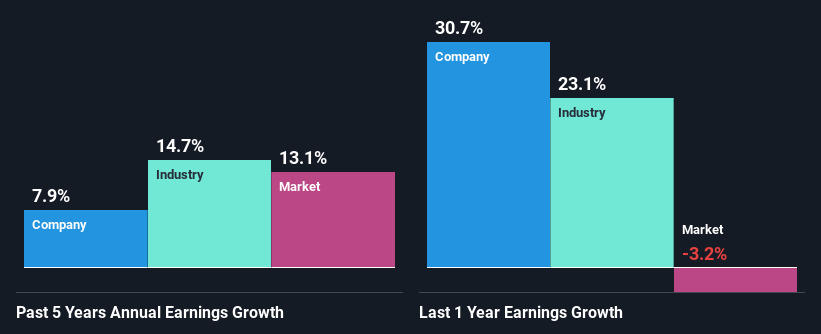Eaton (NYSE:ETN) has had a great run on the share market with its stock up by a significant 30% over the last three months. Given that stock prices are usually aligned with a company’s financial performance in the long-term, we decided to study its financial indicators more closely to see if they had a hand to play in the recent price move. In this article, we decided to focus on Eaton’s ROE.
Return on Equity or ROE is a test of how effectively a company is growing its value and managing investors’ money. Put another way, it reveals the company’s success at turning shareholder investments into profits.
View our latest analysis for Eaton
How Do You Calculate Return On Equity?
Return on equity can be calculated by using the formula:
Return on Equity = Net Profit (from continuing operations) ÷ Shareholders’ Equity
So, based on the above formula, the ROE for Eaton is:
17% = US$3.2b ÷ US$19b (Based on the trailing twelve months to December 2023).
The ‘return’ is the income the business earned over the last year. Another way to think of that is that for every $1 worth of equity, the company was able to earn $0.17 in profit.
Why Is ROE Important For Earnings Growth?
We have already established that ROE serves as an efficient profit-generating gauge for a company’s future earnings. Based on how much of its profits the company chooses to reinvest or “retain”, we are then able to evaluate a company’s future ability to generate profits. Assuming all else is equal, companies that have both a higher return on equity and higher profit retention are usually the ones that have a higher growth rate when compared to companies that don’t have the same features.
Eaton’s Earnings Growth And 17% ROE
To begin with, Eaton seems to have a respectable ROE. Further, the company’s ROE is similar to the industry average of 15%. This probably goes some way in explaining Eaton’s moderate 7.9% growth over the past five years amongst other factors.
Next, on comparing with the industry net income growth, we found that Eaton’s reported growth was lower than the industry growth of 15% over the last few years, which is not something we like to see.
Earnings growth is an important metric to consider when valuing a stock. The investor should try to establish if the expected growth or decline in earnings, whichever the case may be, is priced in. By doing so, they will have an idea if the stock is headed into clear blue waters or if swampy waters await. Is Eaton fairly valued compared to other companies? These 3 valuation measures might help you decide.
Is Eaton Using Its Retained Earnings Effectively?
While Eaton has a three-year median payout ratio of 56% (which means it retains 44% of profits), the company has still seen a fair bit of earnings growth in the past, meaning that its high payout ratio hasn’t hampered its ability to grow.
Besides, Eaton has been paying dividends for at least ten years or more. This shows that the company is committed to sharing profits with its shareholders. Existing analyst estimates suggest that the company’s future payout ratio is expected to drop to 33% over the next three years. Accordingly, the expected drop in the payout ratio explains the expected increase in the company’s ROE to 21%, over the same period.
Conclusion
Overall, we feel that Eaton certainly does have some positive factors to consider. Its earnings growth is decent, and the high ROE does contribute to that growth. However, investors could have benefitted even more from the high ROE, had the company been reinvesting more of its earnings. Having said that, looking at the current analyst estimates, we found that the company’s earnings are expected to gain momentum. To know more about the latest analysts predictions for the company, check out this visualization of analyst forecasts for the company.
Have feedback on this article? Concerned about the content? Get in touch with us directly. Alternatively, email editorial-team (at) simplywallst.com.
This article by Simply Wall St is general in nature. We provide commentary based on historical data and analyst forecasts only using an unbiased methodology and our articles are not intended to be financial advice. It does not constitute a recommendation to buy or sell any stock, and does not take account of your objectives, or your financial situation. We aim to bring you long-term focused analysis driven by fundamental data. Note that our analysis may not factor in the latest price-sensitive company announcements or qualitative material. Simply Wall St has no position in any stocks mentioned.
